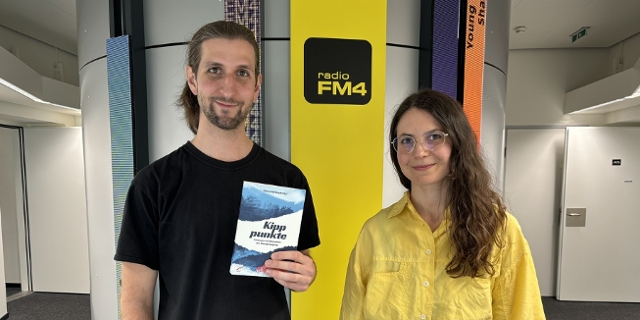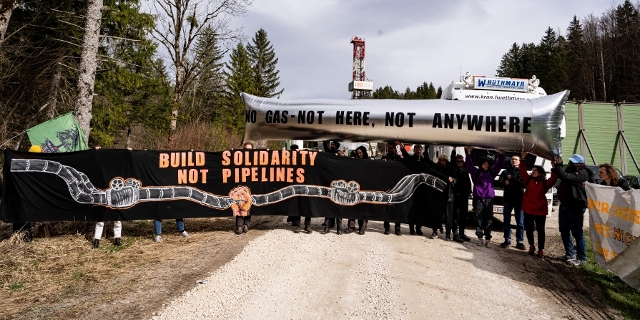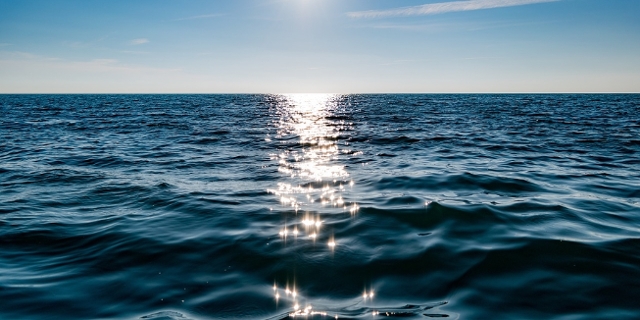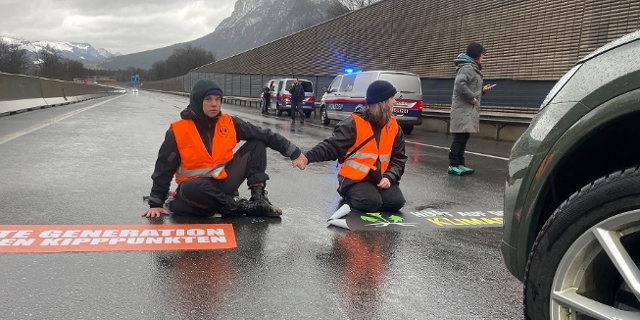„Without Nature, We Are Nothing“
Through a curtain of willow trees, in the heart of Croatia’s Kopacki Rit Nature Park I see a scene out of my dreams. A group of red deer, as large as donkeys are grazing on the flat banks near a muddy side channel of the Danube.
They must scent or hear us, because, even as we hold our breath, they take fright and plunge in an explosion of splashes into the river. Soon I just see their heads and antlers above the brown, slow-moving water. Within a moment, they’ve sprung back out of the water and crash away into the undergrowth.

(c) M.Romulic
Ten minutes later, I am still dumbstruck by this sight, but my guide Jasmin Sadikovic seems disappointed. It’s noon on an unseasonably hot day for spring. “The animals are resting,” he says, “You have to come here at dawn or dusk. It is amazing.”
A Watery Paradise
Jasmin’s enthusiasm for the Kopacki Rit is infectious. He grew up in this area; he was a teenager when the wetlands were mined in the bloody wars that accompanied the collapse of Yugoslavia. Since then he has dedicated his life to protecting and even restoring these rich wetlands through his NGO, Green Osijek.
It’s a place that he sees as a watery paradise. “On the European scale, there’s no big inland wetlands area quite like this,” he says. “It is part of some of the last pristine, untouched floodplains in Europe.”
Indeed, this park is the jewel in the crown of massive 5-nation biome that stretches some 700km along the border regions of Austria, Slovenia, Hungary, Croatia and Slovenia. The conservation project along the Mura, Drava and Danube rivers and has been called the Amazon of Europe, because, as Jasmin puts it “when you are here you feel like you’re in the real wilderness of tropical South America.”
A Habitat that promotes diversity
OK FM4 Spezialstunde: The Amazon of Europe
Am 2.5.2024 ab 18 Uhr geht es in OK FM4 eine Stunde lang um die Wiederherstellung der Sumpfgebiete, mit Interviews und Reportagen.
To show me what he means, Jasmin has taken me to a one of his favourite spots in the Kopacki Rit. The water here is split into several channels and the landscape is dotted with sandbanks and small islands. Several different tree species bow low over the water and the air is alive with the sound of chirping insects and birds. Everything feels so vibrant:
„We still have completely natural processes in this area where the rivers are meandering and landscapes are so, so diverse,“ Jasmin explains, „So you have shallow water, you have deep water, you have different types of forest and trees. Different conditions are good for different types of animals. That’s what makes biodiversity rich here.“

Chris Cummins
For me, the moniker Amazon has a more important association. Since childhood, it has been drummed into me how important it is that we protect rainforests such as the Amazon. Yet who sticks up for wetlands? There are various types of wetlands; forested floodplains such as the Kopacki Rit, but also mangroves, swamps, fens, marshes or peatland bogs. They all have something in common: they have remained under-valued compared to rainforests; and, across the globe, they are being destroyed at a frightening rate.
Undervalued and Concreted Over
„The world’s wetlands are very much under threat, they’re disappearing three times faster than forests.“ says Dr Musonda Mumba, the Secretary General of the Convention on Wetlands. „In the last century in Europe alone, we’ve lost up to 85%.“
All too often wetlands have being considered as “unproductive land” and have been sacrificed in the name of progress. „The disappearances are due to either expansion of agriculture or due to urbanisation or due to just expansion of road infrastructure,“ Dr Mumba tells me.
It’s often the same old Bodenversiegelung, a story that has plagued Austria. But, she continues, internationally they have also been depleted by extraction, for example for peat, or clearing land for other activities.

(c) G.Safarek
„Without Nature, We Are Nothing“
This has set us on a suicidal path, argues Lisa Wolf of the WWF Austria. Far from being unproductive, wetlands are essential for human life. “Without those wetlands, you wouldn’t have tap water. It’s as easy as that,” she says. “So we need nature. We need to restore it. Because without it, we’re nothing.”
My journalistic ears are pricked by the word „restore“. Nature restoration has become a political hot potato in the past year.
Scientists insist that nature restoration projects are vital in Europe. Our ecosystems are in such a bad state of degradation that merely stopping their decline is no longer enough. The dangerous trend must be reversed. Wetlands are a case in point.
Here in Croatia, for example, half have gone in just the past 50 years. That’s an astounding rate of loss and with these eco-systems we are losing valuable eco-services, explains Lisa Wolf of the WWF. “They store fresh water. They control the groundwater, the habitat and are home to a lot of different species. And they fix carbon.”

(c) M.Romulic
Nature Restoration
Ola Miklasińska of WWF Europe calls nature restoration a win-win policy; the low-hanging fruit of environmental policy.
“Through nature restoration we can reduce the impacts of the climate change,” concludes Ola Miklasińska of WWF Europe argues: “And of course by restoring nature we can also bring biodiversity back. So we can actually, let’s say, turn the tide of the biodiversity crisis."
But however logical it might seem to her, nature restoration has become a major battleground of European policy right now.
I’d heard so much about nature restoration this year, but seem to see too little of it. That is my motivation for traveling down to the Kopacki Rit. Here in the heart of the Amazon of Europe, long-planned restoration projects are gradually bringing dried-out wetlands areas back to life; and that is partly due to the political will and funding channels provided by the EU Nature Restoration Law (NRL), a key part of the beleaguered EU Green Deal.
A Law Under Siege
The law, which has already been watered down significantly, would oblige member states to restore 20% of degraded areas of land or sea in their territories by 2030. But its fate is hanging in the balance. Its proponents fear it could be Austria, where there has been opposition from the People’s Party and from provisional governments, that kills it off. Lower Austria’s governor Johanna Mikl-Leitner, for example, has raised concerns it could harm Austria’s home-grown food production.

Chris Cummins
An Open Letter From Scientists and the WWF
In response, this week, 170 members of Austria’s science community joined WWF Austria in an open letter that rejects that criticism, instead arguing that the NRL, by boosting pollination, water security and soil health actually “secures our food supply in the long term.”
In the open letter the scientists describe the legislation as „a unique opportunity“ for the entire European Union because, as well as supporting agriculture, "it increases biological diversity, supports the fight against rapid climate change and its consequences.”
This climate aspect deserves closer examination. I’ve often heard wetlands described as climate superheroes. But why? To understand the dynamics better I dial up Thomas Marquand, soil scientist at Cambridge University.
“It’s really about oxygen. So in a wetlands, the soil is totally waterlogged and oxygen doesn’t move through water as quickly as it moves through air,” explains Thomas. “So in the deep parts of the wetland soil, there’s no oxygen at all. It’s a bit like canning or vacuum packing. We preserve our food like this. In the same way, the plant matter that falls into the wetland soils, once it’s in that waterlogged, oxygen-free environment, it could stay there for a thousand years easily.”
Ingenious! This is why healthy wetlands are so important to our global climate situation.
Climate Heroes Can Become Net Emitters
However there is a worrying caveat. If wetlands are drained or just severely degraded, they lose that climate superpower and become net-emitters “If you drain a wetland then you’re introducing oxygen," continues Thomas Marquand, "and there’s a whole load of microbes and fungi and bugs that are really excited for there to be loads of oxygen and loads of plant to mess around with. And they eat it up and they spew it out as carbon.”
Luckily, points out Thomas, there are tried and tested ways of restoring wetlands. “There’s quite a bit of scientific literature about this. There’s certainly discussions to be had about the most effective way of doing that, but sometimes you can just let things get wet again.”
Removing the Barriers
In other words, where man-made barriers have caused the drying out of wetland ecosystems, these barriers can be removed and the water allowed to return.

(c) Aleksander Koren
It might seem like a simple gesture but in their open letter Austria’s scientists argue that due to its “overall effect,” the NRL could act “as a kind of all-round solution”. As well as impacting the carbon cycle, they can help protect human settlements from natural disasters linked to the climate crisis.
Flood Defence
When the increasingly fierce rainstorms we have seen in recent years cause major rivers to bulge, the damage can be mitigated by wetland areas which allow the swollen rivers to spread into their rich floodplains. On the other hand their water storing capacity can mitigate the impact of periods of drought.
To see restoration in action. I’m cycling on a bumpy track along the banks of a side of the Danube, on a sunlit path between the river and a dense forest of chirping with birds. But across the water something seems rather unnatural. A digger. Jasmin Sadikovic has taken me to see where a dyke, built as a flood defense that deprived the wet meadows of the regular soaking they need. “So now we dig the new channels which will be connected with this sidearm, and in a year or two it will be filled with water and live as a wetland again.”
Bringing Back Life To Nature Again
Jasmin says the EU Nature Restoration Law has helped his work and the area he loves. “Restoration is about bringing back life to nature again. Many of the natural areas are changed because of human activities or because of the climate change,” he says. And if you want to bring the life and biodiversity and the natural processes back into this area, then human intervention is necessary.

Chris Cummins
Jasmin Sadikovic
A lot of the work being done here is being overseen by Nicola Batakovic of Croatian Water. Of course, this work is important for the birds, the insects and plants, he says. But it’s making local people safer. The region has been hit by some very damaging floods in recent years, and he says that restoring the health of the floodplains will help fight against that and other climate related issues.
Protection Against Extreme Weather
“Water levels are rising much faster nowadays when there was the upstream, especially from Germany, Austria into Slovakia and Hungary. And then we have a lot of problems in the flood defense,” Nicola explains. “And after that we have very dry seasons that are even worse than this flood. These restoration projects will help slow the water.
Protection Means Restrictions
Of course not everyone in the area is delighted with the conservation project. The culture of local villages was dominated by cottage fishing industries. Now fishing is severely restricted, as is planning permission for buildings.

Chris Cummins
That’s why Nikola Batakovic believes it is so important to make local families feel welcome in the park, so that they can enjoy the beauty of the nature there and its sense of restfulness but also appreciate its value. “We need to share our work in the communities,“ he says “Hopefully that will help people to understand this important task we are doing.”
Such nature restoration projects don’t come for free, but Ola from WWF Europe urges European taxpayers to see it as an investment.
“We have to think what is the cost if we don’t do it? The numbers from the impact assessment tells us clearly the cost of inaction is ten times higher than the cost of the action of restoring nature.”
Publiziert am 02.05.2024




















